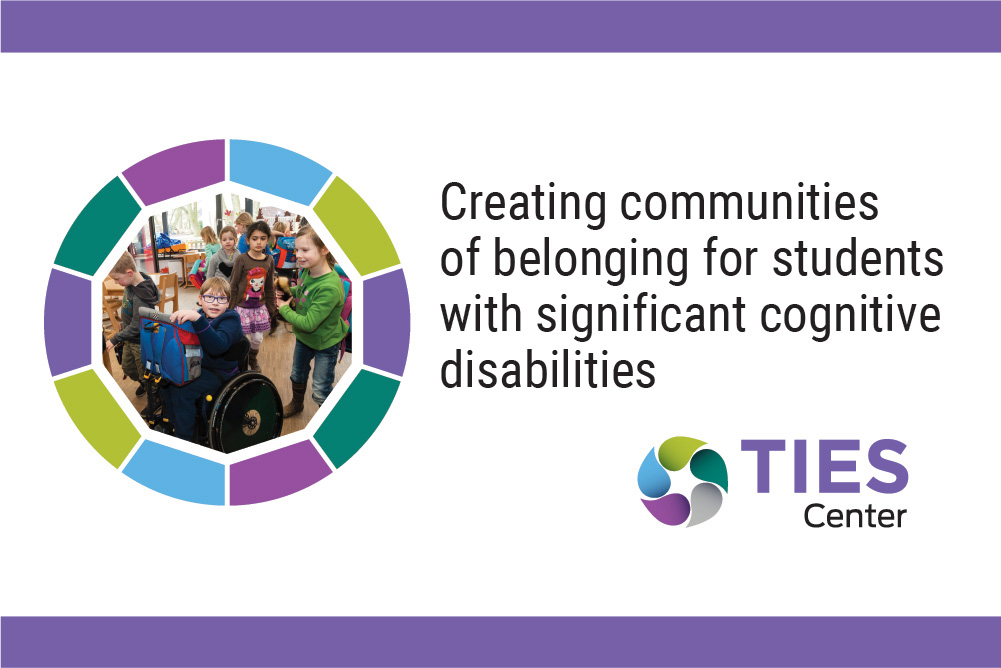
What would happen if students with varying abilities weren’t just welcome in classrooms, but actually needed? They would create schools that aren’t merely inclusive, but where everyone belongs.
Such is the vision behind a new guide from the TIES Center at the Institute on Community Integration, Creating communities of belonging for students with significant cognitive disabilities.
Created in partnership with Vanderbilt University professors Erik Carter and Elizabeth Biggs, the free guide for schools helps them reflect on what they are doing well and what areas need improvement on the road to the full inclusion of students with significant cognitive disabilities. Carter, a former high school teacher and transition specialist, is a widely published author whose research focuses on inclusion strategies. Biggs, a former special education teacher who has worked extensively with students using augmentative communication devices, studies the use of interventions in schools and communities. The authors also led a team to create a second resource on approaches for peer engagement that will be available on the TIES website later this year.
“As students headed back to in-person school, we wanted to emphasize that school should be a place where every student belongs. While this is true for all students, it is particularly true for students with significant cognitive disabilities, who have often been segregated and isolated from their peers,” said Kristin Liu, TIES Center principal investigator. “We launched this resource in October, National Bullying Prevention Month, to bring attention to what schools can do to create a culture of belonging.”
The guide covers nine dimensions of belonging, walking users through the steps required to have students with significant disabilities truly belong in a classroom, from being present (not sitting with a paraprofessional away from other students), to being needed and valued for their contributions to enrich the classroom.
“We found that schools are wanting more resources to be able to reflect on what they are doing well and areas where they want to empower students to become needed members of their classrooms,” said Jessica Bowman, co-principal investigator of the TIES Center, a national technical assistance center on inclusive policies and practices in the kindergarten–8th grade education system. “They want to know what true belonging looks like.”
TIES stands for increasing Time in the general education classroom, Instructional Effectiveness, Engagement with curricula and peers, and Support for Inclusive Practices from state and district education officials.
Students with significant cognitive disabilities have made strides toward being present in the general education classroom, and toward being welcomed and known by their peers, Bowman said, but full acceptance to the point that these students are full contributors has been elusive.
Schools can foster this level of belonging by providing leadership opportunities and skills training to succeed, connecting students with extracurricular activities, and involving them in service-learning projects, among other steps, she said.
Want to start a conversation at your school about inclusion? Check out the Belonging Reflection Tool.



